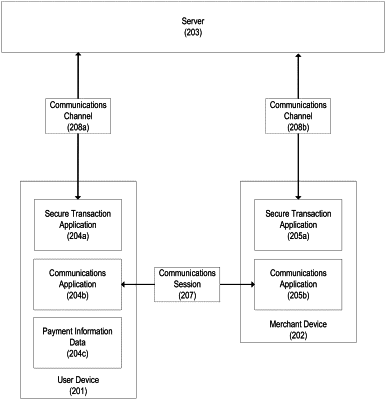| CPC G06Q 20/3821 (2013.01) [G06Q 20/04 (2013.01); G06Q 20/40145 (2013.01); G06Q 20/405 (2013.01)] | 20 Claims |

|
1. A computer-implemented method for securely authenticating users conducting transactions during electronic calls, the method comprising:
detecting, by a secure transaction application executing on a computing device, first user input corresponding to a user interface element that initiates, by the computing device, a communications session, wherein the communications session is one of: a voice call, or a video call;
receiving, by the secure transaction application, from a server, and during the communications session, an authorization request corresponding to a transaction, wherein the authorization request is received via a first communications channel that is different from a second communications channel used for the communications session;
causing display, via a user interface of the secure transaction application executing on the computing device, of a request to approve one or more goods or services to be purchased via the transaction;
receiving, via the user interface of the secure transaction application, in response to the request, and during the communications session, second user input indicating whether the transaction is authorized;
identifying, during the communications session, the user of the computing device by processing, using a trained machine learning model, voice data from the communications session, wherein the trained machine learning model was generated by training, using training data comprising a history of voice samples captured during past calls by a user, a machine learning model to identify the user based on voice samples of the user;
determining, by the secure transaction application, based on identifying the user, and based on comparing one or more properties of the transaction to a threshold, whether to authenticate a user of the computing device; and
in response to the second user input and based on determining to authenticate the user of the computing device, transmitting, to the server, an authorization of the transaction, wherein the authorization of the transaction is configured to cause the server to initiate payment for the transaction using payment information associated with the user.
|